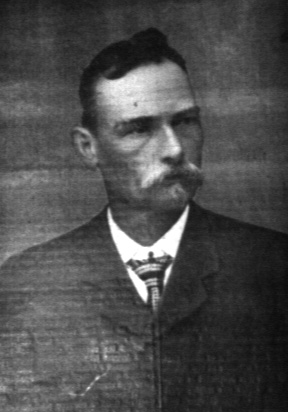Search
For The Answer
Click here to access our database of
Plant Answers
Milberger's Nursery and Landscaping
3920 North Loop 1604 E.
San Antonio, TX 78247
210.497.3760
nursery@milbergersa.com

Two exits west of 281, inside of 1604
Next to the Diamond Shamrock station
Please click map for more detailed map and driving directions.


| 0tto Locke
(1859-1927) In 1856, Johann Joseph Locke, a native of Prussia, purchased two ten-acre plots of land bordering on the Comal River in New Braunfels. In this "garden spot in the wilderness," he saw the need for fruit, shade, and ornamental trees, not just for the ever increasing number of homes in town, but also for homes on farms and ranches spreading out in all directions from New Braunfels. Here, with a crystal-clear water spring he began Locke Nurseries. Thirty years later, in 1886, his son, Otto Locke, continued the nursery business, naming it Comal Springs Nursery. He issued annual catalogs describing and often illustrating his constantly increasing variety of fruit, nut, and shade trees, as well as improved roses, flowers, berries, and vegetables. Included among his introductions were the Bonita arborvitae, Heidemeyer apple, Strington apple, Ferguson fig, Comal cling peach, Dixie peach, November peach, Daisy pecan, Fall City tomato, Germania rose, Locke's Pride pear, Perfection pear, Summer Beauty pear, Honey nectarine, Old Favorite pomegranate, McCartney plum, and Guadalupe dewberry. At the 1904 Word's Fair in St. Louis, Otto Locke's Daisy pecans were the only pecans entered, and according to his 1904-05 catalog, the display was "the admiration of all who saw it." He also supplied a great many roses for display and took home a silver medal for his exhibit of fruits. In 1911 he wrote: "We take great pleasure in handing you our Twenty-fifth Annual Nursery Catalog. A period of twenty-five years is a long time devoted exclusively to one business, and you all know the work and patience it took to test and introduce the best varieties of nursery stock." "Today Comal Springs Nursery enjoys a reputation all over the Southern States and Mexico. Profitable orchards of trees furnished by us are found everywhere and for many popular city parks we furnished the plants." "Today ours is the oldest nursery in the Southwest; built up from a very small scale, it is built on a sound foundation. In the future we will conduct our nursery in the same prompt and reliable way and hope to see many of our first customers patronizing us twenty-five years hence, even if the writer is not able to serve his customers anymore; as he is growing, in connection with the best nursery stock, strong ambitious sons, who will in the future endeavor to please you and furnish the South with high grade nursery stock." In addition to numerous varieties of fruit and nut trees, by 1917 Comal Springs Nursery carried an extensive assortment of ornamental plants including sixteen types of grafted altheas, several buddleias, four different honeysuckles, seven different arborvitaes, four different trumpet creepers, and over one hundred different roses. The 1917-18 catalog stated "we are one of the largest rose growers in Texas and have this year 40,000 extra strong plants to offer." In addition to his own introductions, the nursery carried items introduced by Luther Burbank, the United States Department of Agriculture, the famous Fruitlands Nursery in Georgia, Rosedale Nursery in Brenham, and Pearfield Nursery in Frelsburg. Otto's four sons, Emil, Herman, Walter, and Otto, Jr., all followed their father in the nursery business and established themselves in New Braunfels, San Antonio, and Poteet. In 1927, Comal Springs Nursery passed to Otto M. Locke, Jr. who in 1928 moved it two its present location on San Antonio Road (along I-35 just south of New Braunfels). Mr. Locke ran the nursery along with his wife Etelka until her death in 1990 and continued on his own until his death in 1994. At that time with no children to inherit the nursery it was left to Tandra Lyles who had been helping Mr. Locke since Etelka's death. Otto Locke, Jr. became as famous for his animal menagerie as his plants. He collected animals of all kinds that he sold to zoos and circuses all over the world. He even supplied many animals that were used in making movies for theaters and television. The nursery itself once displayed cougars, monkeys, iguanas, snakes, birds, a forty-three year old snapping turtle, and a collection of prairie dogs. To this day the nursery still sports its own prairie dog town. Today, the struggling Locke Nursery is run by Tandra and her father Joe Ed Lyles who hope to return "The Oldest Nursery in Texas" to its former glory. Reference: Haas, Oscar. "J.J. Locke Saw Need for Nursery in 1856", Southern Florist and Nurseryman, July 16, 1965. |
Return to Texas Horticulture Hall of Fame
|
||


 Otto
Locke (1856-1927)
Otto
Locke (1856-1927)